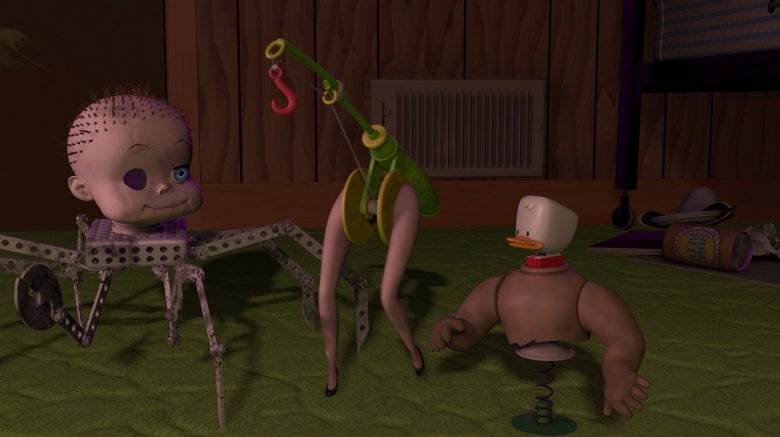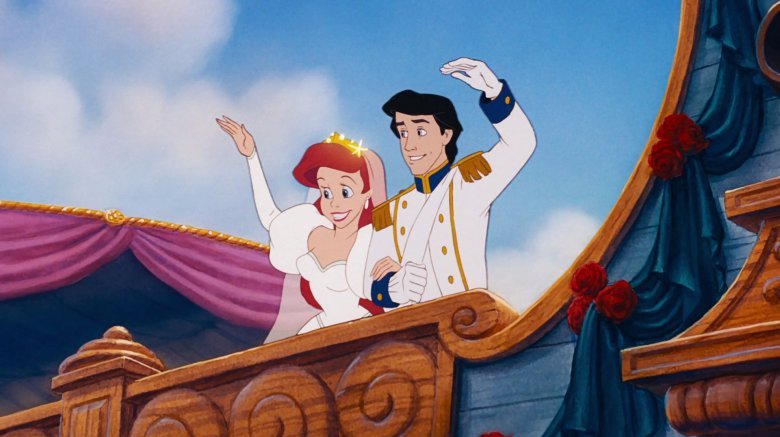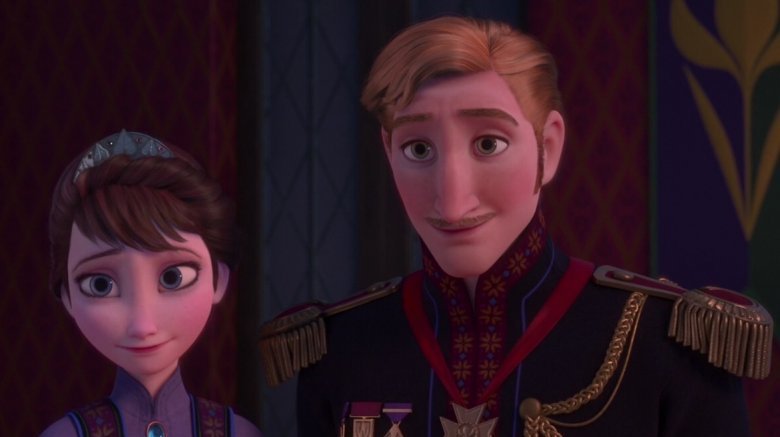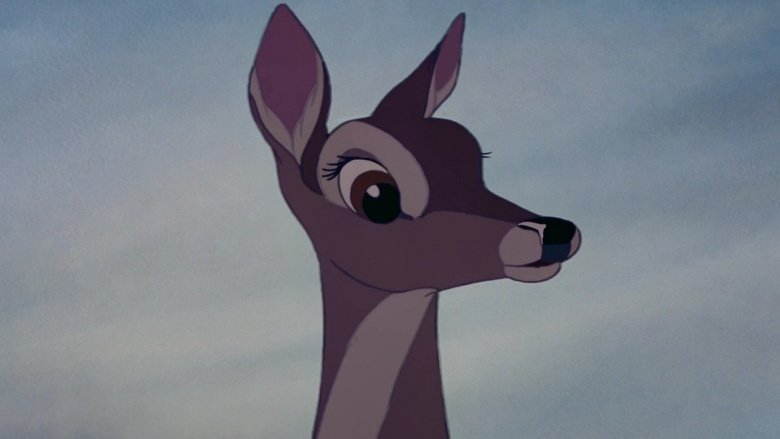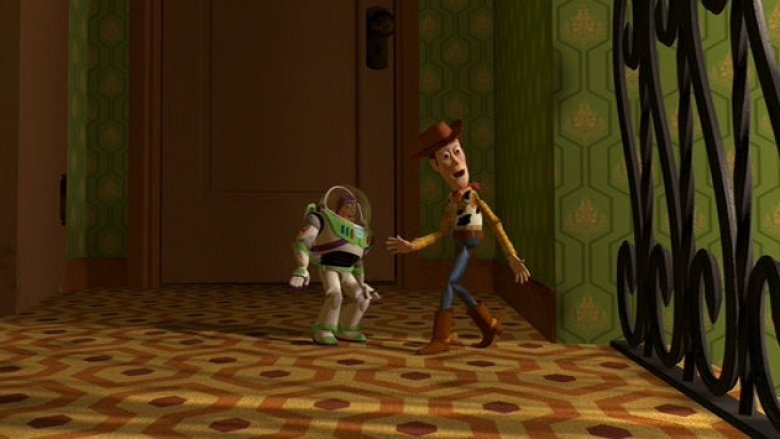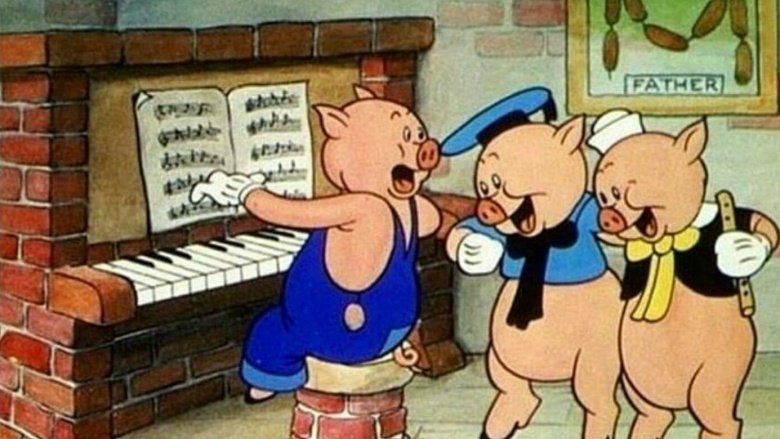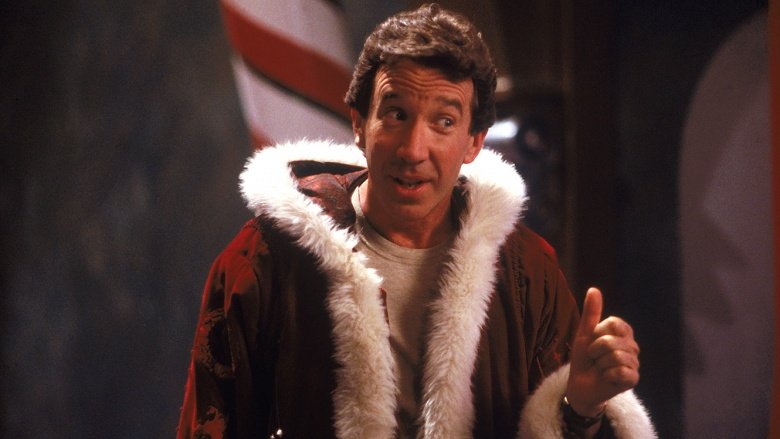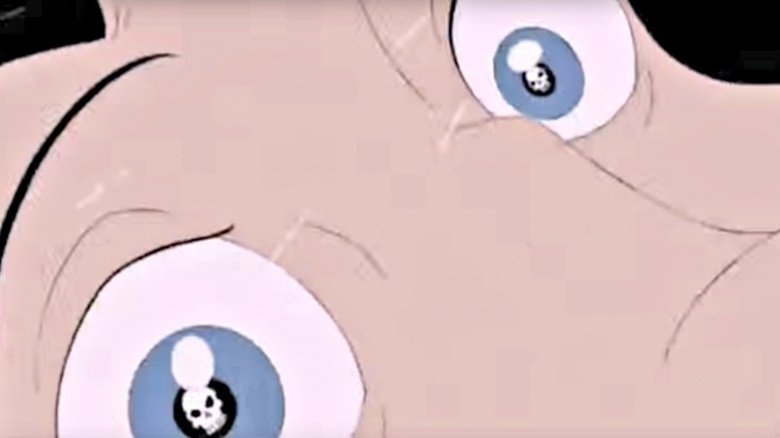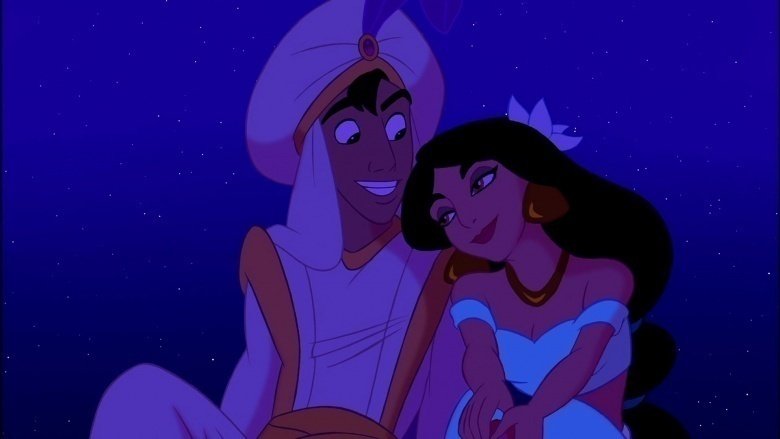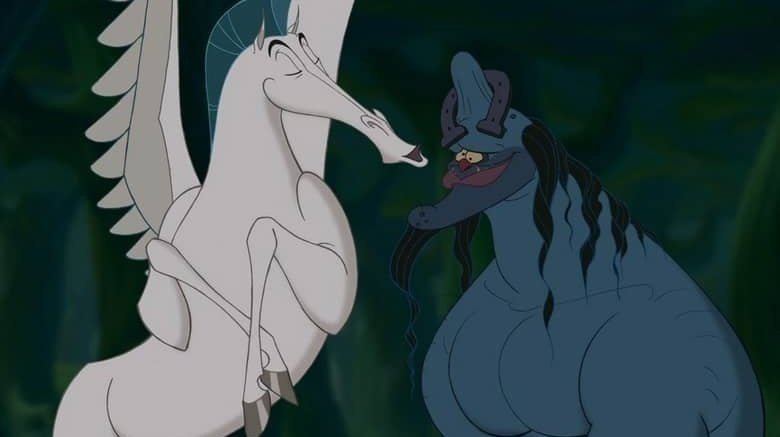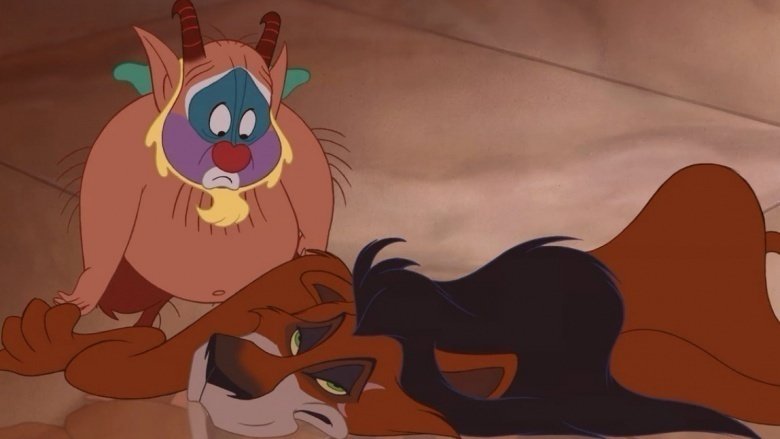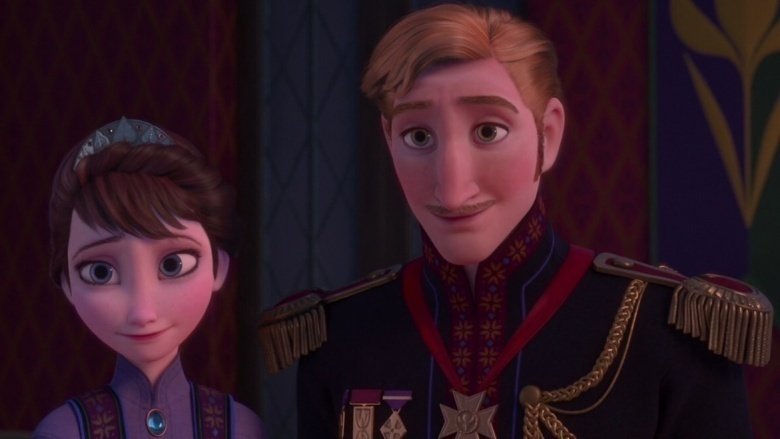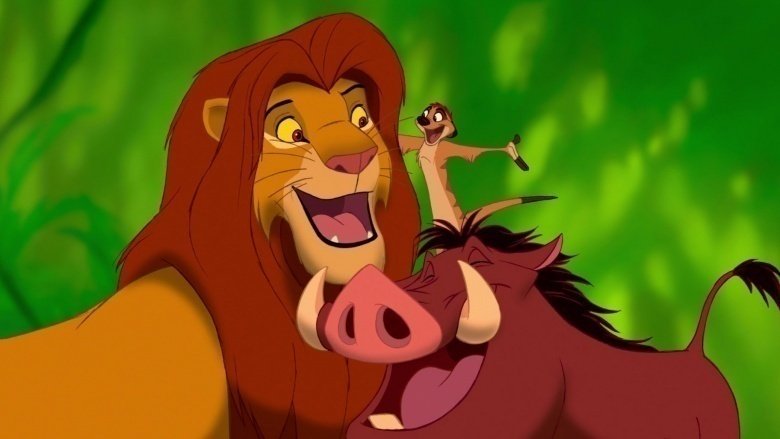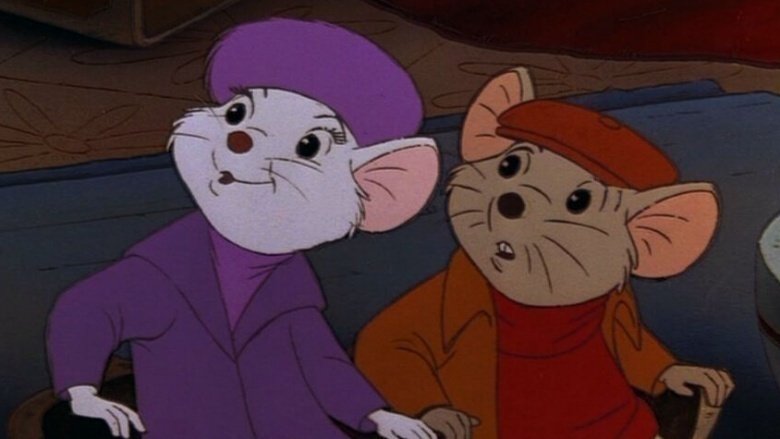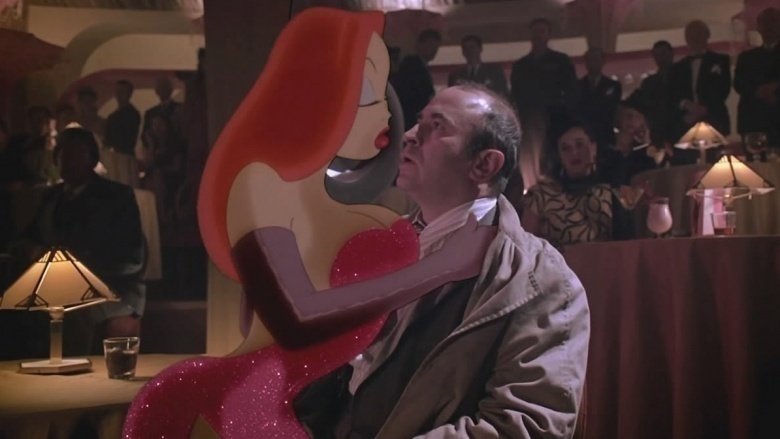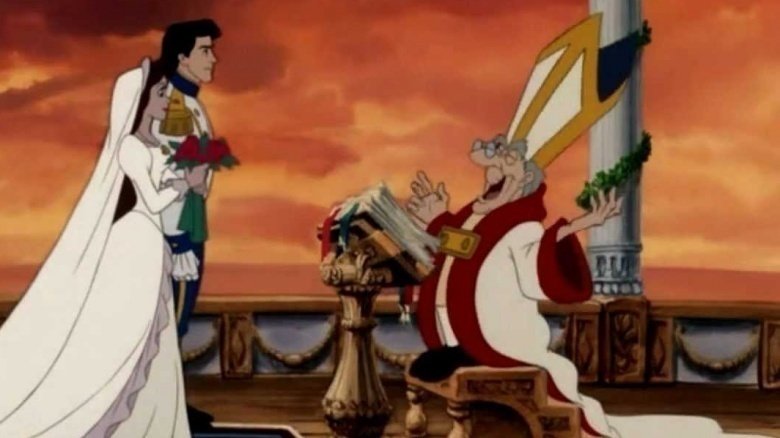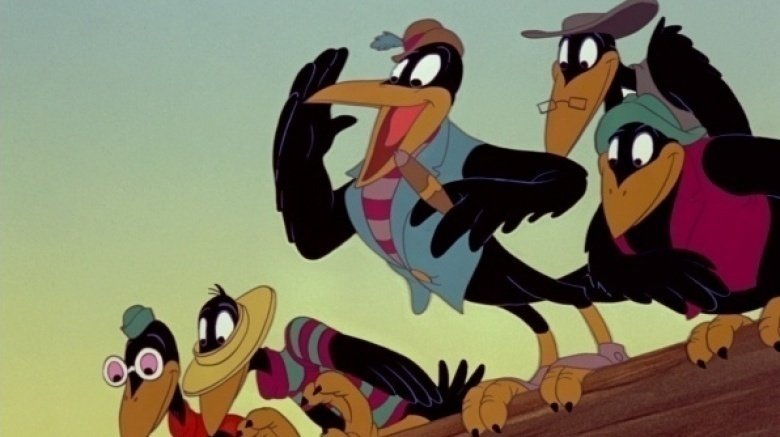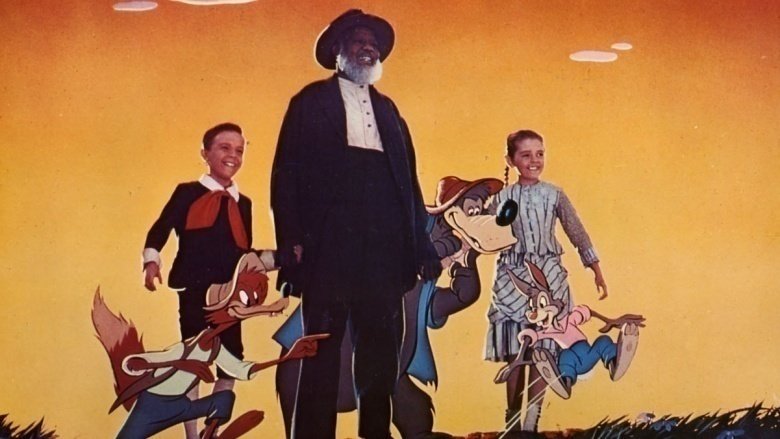Disturbing Secrets Disney Is Hiding
As much as we might like to sing along to "Colors of the Wind" and enjoy the wisdom of grandmother willow, there's still a lot to take issue with when it comes to the story of Pocahontas. In Disney's animated iteration, the title heroine was a free-spirited chief's daughter who fell for the settler John Smith, convinced her people to give the colonists a chance, and everything was hunky dory for all involved in the end.
But even a rudimentary understanding of the history surrounding Pocahontas and the Powhatan tribes proves that narrative is dangerously inaccurate. The Powhatan have taken the liberty of outlining some of the biggest misconceptions about Pocahontas, made mainstream thanks to the movie, and it isn't a "happily ever after" fairytale. According to the tribe, Pocahontas was instead kidnapped by an Englishman at the age of 17, paraded around England as a symbol of the colonists' conquest. She then died at age 21, after which John Smith shared his tale of being rescued by the chief's daughter from certain doom.
Sex Toy Story
As we've seen countless times, Disney animators and writers have a tendency to sneak in some very adult references and images. Perhaps there's no more consistent source of tongue-in-cheek punning than Toy Story.
For starters, one of Woody's most famous toy phrases, "There's a snake in my boot," might sound innocent enough, but it's basically a colloquialism for a man who is claiming to be, erm, well endowed. There's also the moment when Buzz gets visibly aroused (his wings spring up) at the sight of Jessie the cowgirl opening the door for Andy's dog to go potty. Perhaps the slyest innuendo of the series came by way of Legs, bad kid Sid's half-fishing rod, half-doll legs creation that amounts to a sight gag—a toy version of a hooker.
All the dead friends
In Disney's animated Beauty and the Beast, Beast's insistence that Belle never step foot in the West Wing might not have had anything to do with that wilting rose. Throughout the dreary place, there are broken household objects obviously smashed in a fit of self-hating rage by the Beast, including mirrors, chairs, photographs, curtains, vases, and even his own bedframe.
Of course, the centerpiece was still the slashed portrait of his human self, which was just too painful for him to remember—but for some viewers, all those smashed household items held a darker significance. As one Redditor pointed out, many of Beast's servants were turned into similar pieces of decor as a result of his curse, so perhaps these weren't just mistreated trinkets strewn about his chambers—perhaps Beast was a murderer, and left his dead right there on display.
The age of consent
One possible reason so many of Disney's animated classics take place in unspecified days of yore? A lot of these women were far too young to be falling in love and riding off into their "happily ever after" with their princes. Snow White, for example, was just 14 when she was cursed by the Evil Queen, and Aurora from Sleeping Beauty was only 16 when she pricked her finger and fell into a deep sleep. Sure, both may have grown a little longer in the tooth during their slumber before being kissed awake by their rescuers, but does that really change the ick factor?
Other Disney princesses who were definitely underage when conversations about their nuptial plans took the center of attention: Aladdin's Jasmine, who was 15 when the Sultan started prowling for a suitor, and Mulan, who was 16 when she had to go to war to avoid matchmaking. Perhaps the most disturbing example is The Little Mermaid's Ariel, who was 16 when she decided to trade in her home, family, and entire lifestyle to marry some landlubber she'd met only a handful of times.
Shading the band
If the vultures from 1967's The Jungle Book seem familiar, there's a reason. Filmmakers on the project originally wanted the Beatles to sing the soundtrack number "That's What Friends are For," but John Lennon pulled the plug on that idea because, at the time, he didn't want to do an animated film (this was shortly before the quartet made Yellow Submarine).
The quartet of creatures still bore a striking resemblance to the Beatles, including floppy hairstyles and Scouse accents, and fans interpreted those characters—named Buzzie, Flaps, Ziggy, and Dizzy—to be a parody of the Fab Four. Whether or not it was payback for their refusal to appear, the hairiest vulture (who wasn't depicted as being very bright) admitted, "Nobody wants us around either."
Something worse than death
Being a parent in a Disney film is never a picnic, but perhaps no one had it worse than Elsa and Anna's mom and dad. King Agnarr and Queen Iduna started out the film shaming their eldest daughter into suppressing her magical gift shortly before disappearing after a shipwreck. And while that might've seemed like the end of their story, their suffering had only just begun.
Frozen co-directors Chris Buck and Jennifer Lee revealed that the two didn't die at sea, but instead washed up on a desolate island with their newborn son in tow and built a treehouse for shelter before they were mauled to death and eaten by a leopard—leaving their baby boy to be raised by gorillas and grow up to be Tarzan. Basically, these people isolated one daughter to save the other, had a baby on a boat, almost drowned in a horrific shipwreck, washed ashore in the middle of nowhere, and then became lunch for one of the local jungle cats, thereby leaving all three of their children orphaned on separate continents. It doesn't get much worse than that.
Disney movies have more than their fair share of cool hidden Easter eggs. They also happen to have lots of weird, controversial, and just plain creepy secrets and moments that only someone who's truly obsessed would bother compiling into a single list. So here we go.
All the dead moms
The number of dead or missing Disney moms is staggering. Among the movies featuring absent matriarchs: Beauty and the Beast, Aladdin, Pocahontas, Cinderella, Bambi, The Fox and the Hound, and Finding Nemo, to name just a few. And there may be a devastating personal reason why Walt Disney's films were so heavy-handed with this form of personal despair.
His own mother, Flora Call Disney, unexpectedly died after the animator bought her a house with his earnings from Snow White and the Seven Dwarfs. The home's faulty furnace, which his studio tried and failed to repair, ultimately leaked and asphyxiated her, and Disney reportedly felt personally responsible for her passing, since he was the one to purchase the home and it was his studio's repairmen who failed to remedy the issue after she'd reported it to him. Gulp.
The Shining meets Toy Story
Hardly anyone would suggest Stanley Kubrick's R-rated masterpiece The Shining should share an audience with Disney's movies, but the Toy Story series still made a slew of homages to the Stephen King-based story. For starters, the floor pattern in vicious Sid's house was remarkably similar to one seen in the Overlook Hotel. (He was the kinda kid you could imagine spouting "redrum," after all.)
The number 237, a nod to the notorious hotel room in The Shining that housed so much mayhem, was also referenced several times throughout Toy Story 3. A microphone in the animated pic also closely resembled one seen in the 1980 thriller, and there was even a subtle reference to the name Tony, which was what Danny called his finger friend in The Shining. Toy Story 3's director Lee Unkrich is a massive fan of The Shining, so the film's references were definitely intentional.
Sausage dad
The three little pigs might have been most afraid of the big, bad wolf coming to blow their houses down, but the 1932 short film also included a gentle reminder of the other big threat to the pink trio's safety: the human diet.
In The Three Little Pigs, once they all retreated to the security of Practical Pig's brick house, they were shown merrily enjoying their silly piano symphony next to a portrait of their "father," who was shown as a length of sausage links. That low-key bit of chinny-chin-chin morbidity got even gloomier when their mother's picture was shown. In her portrait, Ma Pig was shown nursing seven piglets rather than just those three, which suggests that four of the characters' siblings may have also taken up final residence in the slaughterhouse, instead of getting to prance around with musical instruments and assemble their own little shanty houses.
1-800-SPANK-ME
Disney had a pretty big oopsie on its hands when The Santa Clause included a reference to an actual sex hotline that some children then went and dialed up. In the film, Tim Allen's Scott Calvin was given a phone number with which he could reach his ex-wife during his Christmas visit with their son, and he joked, "1-800-SPANK-ME? I know that number."
Little did Disney realize the number was actually an operative sex hotline which charged callers by the minute, and several children reportedly dialed in and racked up some huge phone bills as a result of their curiosity. The dialogue was later cut from DVD releases for the movie and changed to "1-800-POUND" in television airings of the same, but appeared in the original VHS tapes which Disney didn't recall, they said, because it "would actually do more harm than good" and draw "more attention to the matter."
Gaston's death eyes
It was a bleakly celebratory moment when "Kill the Beast" crooner Gaston finally went by the wayside—as in, he was pushed off of Beast's cliffside castle after trying to storm it and kill Belle's captor-turned-true love—in Beauty and the Beast. Upon closer inspection, the scene was even more macabre than it seemed.
Fans of the 1991 animated classic will remember that in the final act, Gaston fought Beast on the roof of the castle but was handily overtaken and forced to surrender. As soon as he got the chance, though, he literally stabbed Beast in the back—and Beast reflexively pushed him, knocking Gaston to his death. In the close-up of his eyes, a pair of skulls can be seen flashing in his pupils (a detail deleted from VHS release but seen in the DVD version).
Aladdin's subliminal message
For a guy who tried so hard to shake his "street rat" image, Aladdin (who disguised himself as Prince Ali with the help of Genie) sounded pretty provocative when he was heard whispering "good teenagers, take off your clothes" while attempting to court Princess Jasmine on her balcony during the 1992 animated adventure.
Actor Scott Weinger, who voiced the character, has insisted he never said the words so many heard, but the sound bite is still pretty convincing despite his denial. The scripted line for the moment in question was reportedly supposed to be "c'mon, good kitty, take off and go," which would make sense as Aladdin was trying to get Jas's defensive tiger guard Rajah to stand down, but whether due to a sound mixing flub, as some suspect, or an intentionally implanted bit of subliminal messaging, that is just not what what the utterance sounds like.
A Herculean mess
Disney's track record of slipping in secret sexual innuendos continued in full force with its 1997 ode to the Greek demigod Hercules. For starters, one of the main character's muses forgot to bring some underbritches to the musical medley performance during the "Zero to Hero" scene (just after the "is he bold?" line, no less). Yowza. The most obvious Freudian slip came in when the River Guardian got plonked in the head by a horseshoe after hitting on the character Meg. Hercules came to avenge her honor, and, after a tussle, the creature is walloped by his own horseshoe. The welt that followed was unquestionably phallic in nature—especially considering his forehead already had a suggestive crease line that totally resembled a pair of testicles.
Scar, the handsome throw rug
Scar definitely got what was coming to him at the end of The Lion King when Simba threw him to his own pack of hungry hyenas, but it wasn't the last Disney fans would see of the cowardly lion. In fact, his ultimate fate was slyly foretold by Mufasa's sidekick bird Zazu and later fulfilled in Hercules.
In an early scene from The Lion King, when Zazu and King Mufasa were discussing the then-underestimated menace of his brother Scar, Zazu threw out a prediction that "he'd make a very handsome throw rug." Three years later, when Hercules dropped, that prediction somewhat came true when Hercules tried on a pelt that looked exactly like Scar and then threw it to the ground in frustration. There was no question it was the skin of Scar he'd dropped: the coloring, scowl, and even his namesake scar were identical.
Elsa's parents' shipwreck
Parental deaths are both grim and super common in Disney's animated collection, but when it came to the demise of Elsa and Anna's parents in Frozen, there was an even murkier element involved. Not only did the King and Queen of Arendelle venture out to sea and never come back, leaving their orphaned daughters to duke it out over control of the kingdom, but their deaths might have also been incorporated in a film that came out more than two decades before.
The theory is their fateful voyage landed them at the bottom of the ocean near where Ariel's family lived in The Little Mermaid and Ariel explored their doomed vessel, because it looked incredibly similar to the boat from Frozen. The theory is bolstered by the fact that Tangled's couple cameoed in the new picture, which suggested the lost royals were en route to their wedding before they perished.
The Lion King's sex dust
Remember watching 1994's The Lion King as a kid, being enthralled by Simba's struggle to face his fears and confront his villainous uncle, and being totally distracted by the sudden and unmistakable appearance of SEX? No? Well, tell that to the American Life League, the conservative group that in 1995 claimed the word "SEX" is spelled out in a dust cloud in the sky after Simba flops down onto a ledge. But Tom Sito, one of the movie's animators, has since explained that the dust cloud actually spells out "SFX," or "special effects," a kind of a signature inserted into one frame of animation by Disney's effects team. And you know? That's probably true. Because slipping a word as tame as "sex" into a single frame of an animated movie is unbelievably lame. If an animator really wanted to mess with people's heads, he'd put in something way more risque. Like "butt," or "winkle," or something. Or maybe he'd just throw in a picture of a topless woman.
The Rescuers' topless woman picture
In 1999, Disney made a surprising announcement, saying it was going to recall 3.4 million copies of its 1977 animated film, The Rescuers, just three days after the movie's second release on home video. The reason? That was even more shocking: hidden within two frames of the movie was an inexplicable photo of a naked lady. Apparently, sometime between the film's completion and its debut in theaters, someone in the distribution chain slipped the image in, unbeknownst to Disney, or really anyone. The image probably would never have been discovered at all if it weren't for improvements in video technology that allowed people to freeze the movie and find its secret shame. Nearly three months later, The Rescuers was released once again, this time without the nudie pics. Meanwhile, copies of the movie that escaped the recall are fetching big bucks on ebay, commanding whopping prices between, uh, four and eleven dollars. Never mind. Anyway, this isn't really that bad. It's not like one of the animators drew a woman not wearing any underpants.
Jessica Rabbit isn't wearing underpants
In 1988's Who Framed Roger Rabbit?, femme fatale Jessica Rabbit has an infamous line: "I'm not bad, I'm just drawn that way." As it turns out, that was a little truer than anyone could've guessed. Just as the video release of The Rescuers revealed a hidden controversy, so too did the Laserdisc release of Roger Rabbit. When Jessica and Eddie Valiant get into a car crash, they're both thrown from their cab. For the briefest of moments, only about a frame or two, viewers can see that the animators declined to draw any definitive underwear between Jessica's legs. So is a missing line of paint enough to cause a panic? Is it creepy that Mickey owns a dog and is friends with Goofy, who is also a dog? The answer to both questions is "yes." Reports from the time said that retailers sold out of the laserdisc for the movie one day after initial news of the missing undies hit the media back in 1994. Fortunately for fans of decency everywhere, the missing underthings were inserted for the movie's DVD release. But come on, this was clearly much ado about nothing. Nobody could actually see any genitals or anything.
All the genitals in The Little Mermaid
The Little Mermaid from 1989 doesn't seem like it'd have much room for any naughty bits, especially since all of the movie's undersea denizens have, well, people parts on the top and fish parts on the bottom. But when the evil Ursula tries to trick Eric into marrying her, the minister officiating the wedding seems to be...excited by the impending nuptials. Disney's Tom Sito said that what looks like the guy's little minister is actually his knee. Then, on the cover art of the original home video release for The Little Mermaid, many people have found what sure does look like an important part of the male anatomy hidden in a spire on an underwater castle. One report claims that the artist, who was a freelance illustrator working on the cover and not a Disney employee, was simply in a rush to finish the cover art and stayed up late the night before the deadline to finish the job. In the end, the minister seems to have survived various video releases untouched, while the cover image had its conspicuous spire cut.
Seriously, though, people are making mountains out of molehills here. It'd make sense to get upset only if there were something truly objectionable in these Disney movies...something like a never-ending parade of stereotypes and blatant racism.
The parade of stereotypes and blatant racism in Disney movies
Okay! So, a whole lot of Disney movies were made and released during a time in America where concepts like "ethnic and racial sensitivity" or "political correctness" weren't really, like, things. As a result, some of these flicks have aged pretty horribly due to the inclusion of characters that are unavoidably offensive by today's standards. In fact, one Disney movie is so entirely racist that it will simply never be released on video. Ever. More on that in a moment.
Where to start? In Dumbo from 1941, the baby elephant encounters a group of crows, who've since been identified as racist caricatures of African-Americans. Case in point: the leader of that group was originally called "Jim Crow" in the script. However, some have pointed out that the crows are actually positive, since they're some of the only characters who help Dumbo and identify with his outsider status. Too bad the rest of these examples aren't quite so easy to justify. The original cut of Fantasia from 1940 features a sequence based on Beethoven's Pastoral Symphony, which features centaurs and other Greek mythical creatures getting ready for a feast. Included in that sequence are two servant centaurs named Sunflower and Otika who are clearly modeled after African-American stereotypes. They've been cut from subsequent releases of the movie. Then there's the highly inappropriate depiction of Native Americans in 1953's Peter Pan, in which Tiger Lily and her people act in ridiculously wild ways and speak in broken English, and are repeatedly referred to as "savages." And Lady and the Tramp from 1955 features an extended sequence depicting evil Siamese cats with thick accents and plenty of other offensive Asian stereotypes. But that's nothing...
The worst of the worst
The worst offender, though, is 1946's Song of the South, a movie you may not even know about, since it's never been released on video in the United States. You've definitely heard one of its tunes, "Zip-a-Dee-Doo-Dah," which won the Academy Award for Best Song in 1947. But the movie's general reliance on black stereotypes and racial caricatures have made it what one critic calls "one of Hollywood's most resiliently offensive racist texts." Yikes.
Kind of makes all those wieners and ding-dongs all over The Little Mermaid sound almost cute now, huh?

